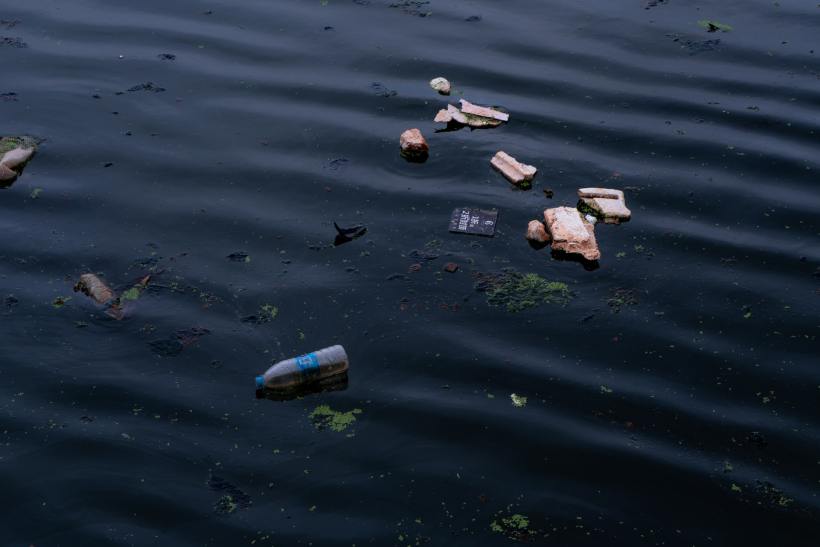We all love this planet, and we all want to keep this planet as the most beautiful planet we will ever see. However, our behavior doesn’t reflect our love to this planet, because we keep on littering and destroying it like what we did to our room when we were 15.
In example, look at our plastic consumption, or to be more precise plastic pollution. We have polluted this planet with plastic so much, that we have a floating island of plastic waste in Pacific Ocean. It would require a lot of time to get rid of all those floating plastics.
Moreover, the tiny particles of plastic or microplastic is already discovered literally in each corner of the world. Microplastic can be found in both the highest peak on Earth (Everest Mountain), and the deepest part of it (Mariana trench).
There are a lot of things we need to talk about when we talk about plastic. But in this article, we are going to talk specifically about what kind of plastic is littering our planet. There are a lot of them, but some kinds of plastic outnumber the rest by huge margin.
Here are 5 kinds of plastic that contribute the most to our plastic pollution. We hope this knowledge will help you avoid adding up the pile even more.
Plastic Bags

There is a reason why plastic bag is on top of the list, because this is also the most consumed piece of plastic on earth. Data stated that this kind of plastic is responsible for around 14% of total plastic waste on this planet.
Plastic bag is dangerous for the environment not only because it is consumed excessively every single day, but also because in appearance it looks like a jellyfish. You should have heard the news about turtles died because mistakenly ate plastic, right?
Fortunately, some places have banned the presence of this plastic product, and countess regulations are made to limit the consumption of plastic bags. However, the bans and regulations still cannot balance the scale with the demands for it in other places.
Plastic Bottle

The portability of plastic bottle, accompanied by its cheap production cost, make this product a favorite for producers. And because of that, a lot of plastic bottles are still produced every single day up to nowadays without tight regulation.
Don’t you know that plastic bottle accounts for around 11% of global plastic waste? This is one of the most underrated and overlooked plastic products in term of potentials, either the potential to be recycled or the potentials to bring danger as plastic waste.
Plastic bottle can be easily recycled just by using it to store things that can be stored in it such as rice, oil, flour, liquid cleaner, etc. One thing that you should avoid is reusing plastic bottles for re-storing beverages, because some type of plastic can be toxic this way.
Food Container & Cutlery

During this coronavirus pandemic, we see the rise of takeaway and delivery food services. But as the rise continued, there is one side effect that actually harms the planet: the use of single-use plastic food container and cutlery.
Not only from preexisting restaurants or street food merchants, the rise of the use of plastic food container & cutlery also come from home businesses. There are a lot of people want to make profit of the condition, and sometimes it is inevitable to use plastic food containers and cutlery because they are the cheapest combination for the service.
Wrapper

Another thing that’s almost similar to food container and cutlery in term of rise during this coronavirus pandemic is the use of plastic wrapper. But unlike food container, we can literally use plastic wrapper for anything starting from wrapping food to nuclear warhead.
Data stated that around 9% of global plastic waste consists of plastic wrapper of all products. This is ironic that plastic wrapper is so preferred, because we all know that plastic wrapper is that bristle. But the choice is ours, whether we stop using plastic wrapper to reduce the number or let the habit continues.
Synthetic Rope

In one of our articles, we have mentioned how fishing equipment is one of the highest contributors to ocean plastic waste. And among any fishing equipment, synthetic rope that forms fishing nets is sitting at the top spot.
Around 9% of global plastic waste came from this source. However, regarding this problem, many environmentalists believe that the number stated only represents the discovered particles, while the ones that still cannot be discovered is far greater than that.
Dishonorable Mention: Cigarette Buds

No, we are not going to give honor to the trashes, that’s why here is the dishonorable mention. First dishonorable mention should come to cigarette buds that float away from the beach to the vast and dangerous ocean.
Cigarette buds are one of the biggest problems for our marine ecosystem. Not only because it can break down into microplastics, but also because it contains a lot of chemicals that can harm every single organism accidentally swallowing it.
Worse, there is always a chance that the fish which ate the toxic chemicals got caught by fishermen, sold in the market, and consumed by us. In other words, throwing cigarette buds to the ocean is like poisoning ourselves deliberately.
Dishonorable Mention: Diapers & Wet Wipes

Another thing that should be mentioned is the dynamic duo of baby products: diapers and wet wipes. Both diaper and wet wipes are consumed every single day, but not every day that their presence is put under the spotlight.
We have talked about the danger of wet wipes in one of our articles, about fatberg, which is a mass of discarded rubbish which can contain human waste that we secrete and other rubbish. The rubbish can consist of both diapers and wet wipes.
That’s why, to avoid creating it, we should never dispose those items into waterways. Still, even though most of those products go to the landfill instead of the ocean, their presence in waterways is highly preventable and should be prevented.
Sources:



Leave a Reply